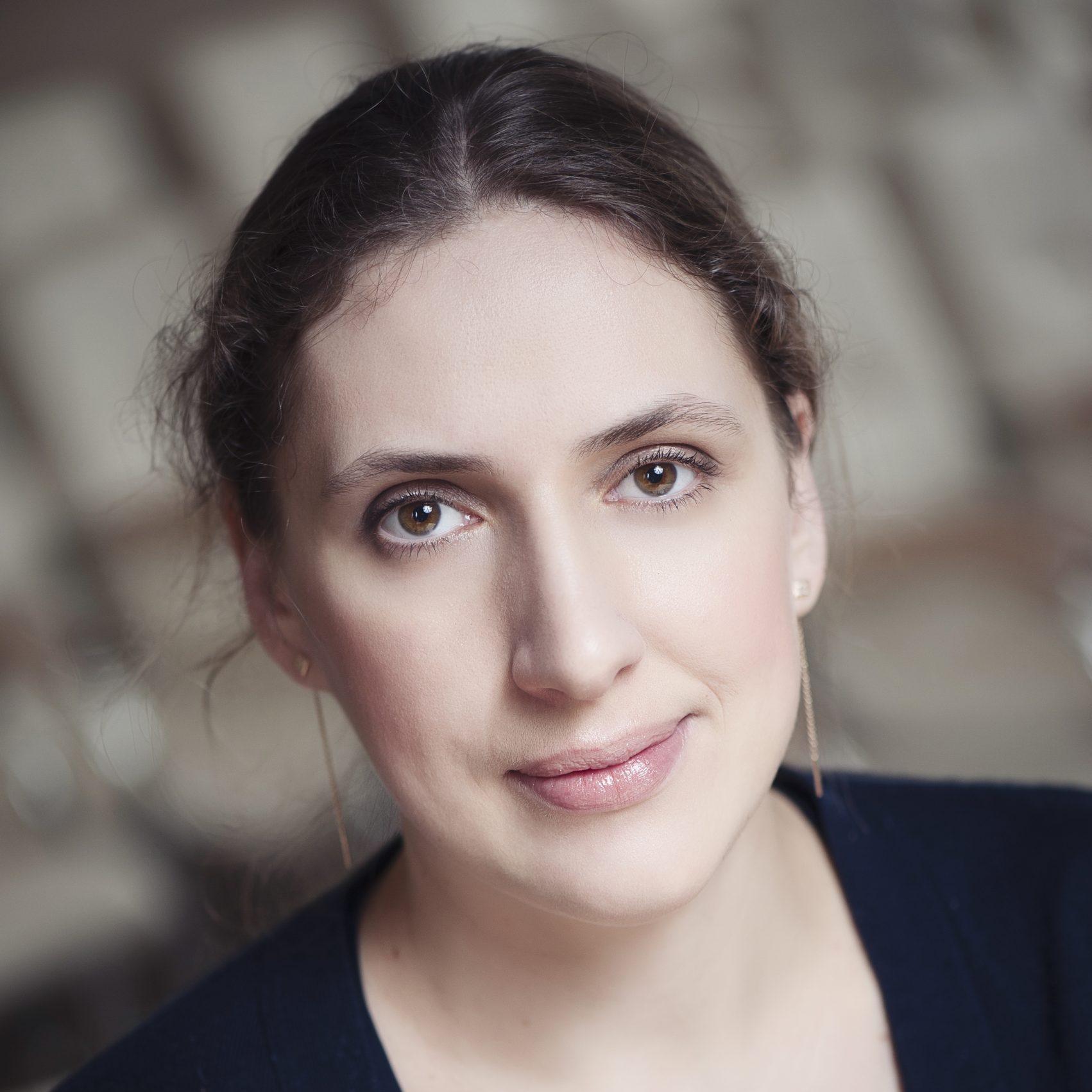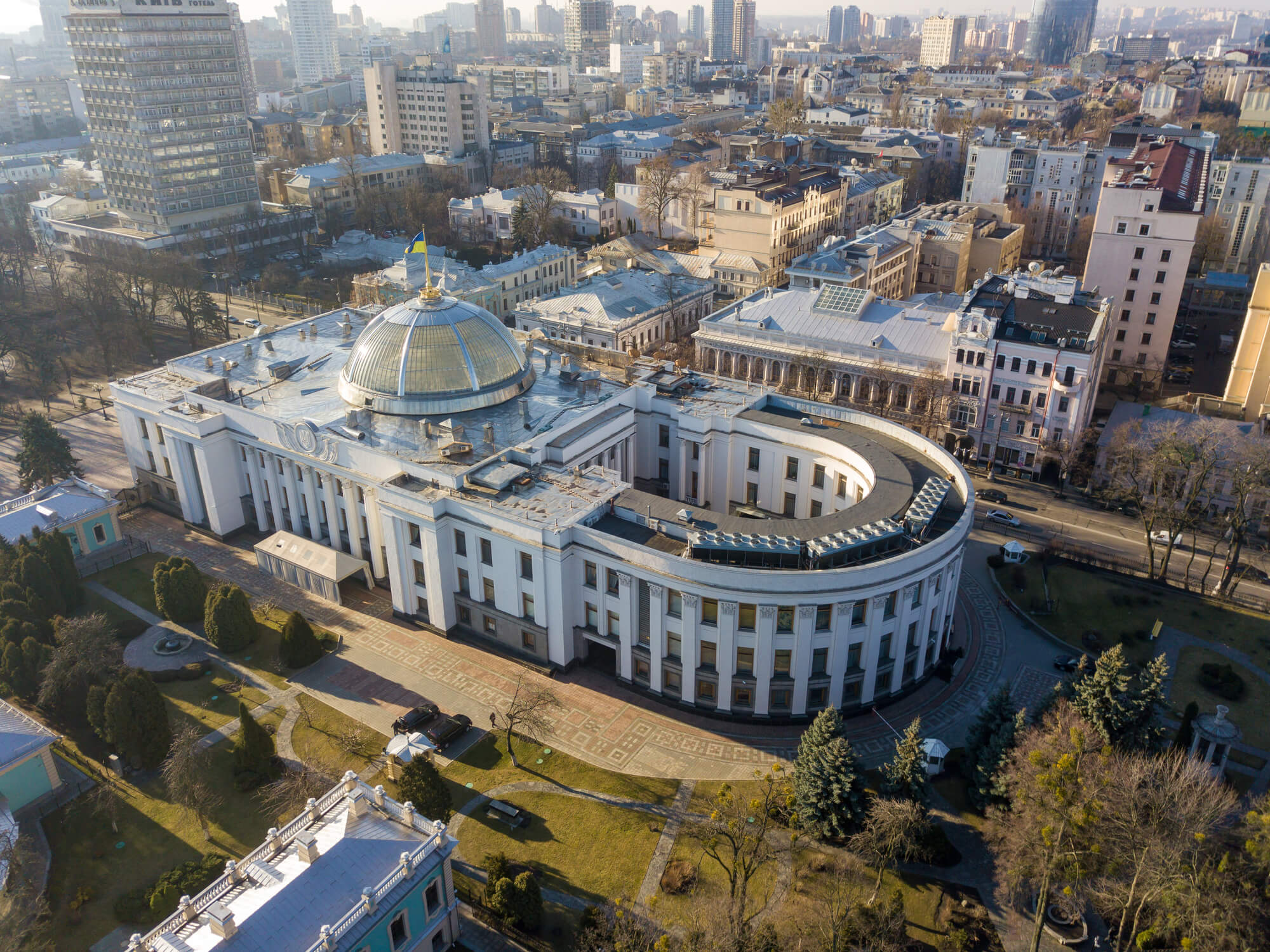In this post we review the published programs of the nine highest-rating parties that represent almost all the entire, but rather limited, spectrum of the Ukrainian politics: Batkyvshschyna (Motherland), Civil Position (CP), Communist party of Ukraine (CPU), Radical Party (RP), Opposition Block (OP), Poroshenko Block (BPP), People’s Front (PF), Samopomich (Self-help), Strong Ukraine (SU). Despite the fact that these parties are political rivals, their programs are very similar.
The main common feature of the party programs is the absence of ideology. Hence, they try to go down to as many people as possible instead of occupying their electoral niches. That’s why in the same program one can find deregulation of and support for “domestic producers”, lowering of taxes and improving of social protection, anti-monopoly statements and promises to concentrate land in the state property, lowering of inflation and indexing of salaries and pensions etc. Another common feature of the party programs is their vagueness. All of them promise to “develop”, “increase” and “support” but hardly provide any clear measures or indicators by which the programs’ success can be evaluated. Finally, only three of the considered nine party programs have more or less clearly articulated goals. The most specific (although hardly achievable) is the goal of the People’s Front – to enter the top-20 countries of the UN Human Development Index in twenty years. Other parties either do not formulate their goals at all or provide some general phrases, such as “victory”, “justice” or “welfare”. Below we consider how the main issues of the country’s development are addressed in the party programs.
The most popular idea among the programs is the decentralization, which is discussed by all parties. In the majority of programs, the decentralization implies transferring of powers from local state administrations to local councils’ executive committees, and leaving a higher share of tax revenues at the local government disposal. However, the Opposition Block proposes to introduce direct elections of oblasts governors, which actually implies federalization of the country.
Batkyvshchyna, CP, PF and Samopomich think that Ukraine should join NATO (Batkyvshchyna proposes to hold a referendum on this issue already on October 26th, 2014, which is of course unrealistic), CPU and OB support a “neutral” status of Ukraine, and BPP and RP don’t comment on the issue. Ukraine’s membership in the EU is strongly supproted by BPP, Batkyvshchyna, and CP.
Each party program addresses the war with Russia in some way. On this issue, most of the parties count on the international support, and therefore propose multi-side talks with Russia. The most specific proposals are as follows: to introduce own sanctions against Russia, to strive for recognition of Russia as a terrorist-sponsoring state (Batkyvshchyna) and to enforce the state border (PF). CPU and OB insist respectively on “announcing peace” and adopting a “National peace plan”, or simply speaking, on capitulation. The BPP’s program is limited to the general phrases, such as “unite against the aggressor”.
All of the parties, except for the CPU, currently believe that it is necessary to develop a national army. And almost all of them propose to rearm the Ukrainian army with the help of the domestic military industry (only Samopomich thinks that we need to import the arms too). The President’s party (BPP) believes that Ukrainian military production can “give a push to reindustrialization” and help revive the military potential of the country. Perhaps, this belief was inspired by the example of the U.S., which became the largest world economy after the World War II. However, that war took did not take place on the U.S. territory. Besides, a big question is whether Ukraine actually needs a “reindustrialization” in this post-industrial world. Justifying its name, the Radical Party suggests renewing the Ukrainian nuclear potential, which is as much radical as it is radical. Every party also paid attention to social protection of soldiers and participants of the Anti-Terrorist Operation. The most specific proposal – to provide them with the status of the “combat participants” – is set forth in Batkyvshchyna’s program. The most generous are the People’s Front and the CPU – they promise housing to soldiers and their families. Samopomich suggests transparent and targeted social provisions.
The most well-developed proposal on the army design is found in the Civil Position’s program, which suggests creating a three-level system of country defense: a professional contracted army, a permanent military reserve and a complex system of territorial defense (however, it is unclear how to finance such an army – but this is the question to almost all proposals of all the programs). Formation of a military reserve is also proposed by RP (as potential guerilla units) and Samopomich (through creation of a wide system of military training). The CPU and OB insist on disarmament and liquidation of illegal military units. However, it would be a mistake to think that they would go to the East to disarm the separatists. First of all, this suggestion is about the volunteer battalions of territorial defense, which may have problems with their legal status (see here and here).
Almost all parties have proposed their plan for Donbas and Crimea. The majority of these plans are rather utopic. The least specific, and therefore the least suitable for criticism is the BPP’s plan, which foresees a “political and diplomatic effort” and “protection of Ukrainians in Crimea and Crimean Tatars.” However, it is hard to imagine how these will be done. Batkyvshchyna proposes to cancel “Putin’s laws” (the laws on the “special status” of the occupied territories of Donetsk and Luhansk oblasts that actually recognize the terrorists’ power over them) and to rebuild the Donbas’s infrastructure – presumably, at the expense of Russia, which should be “made to compensate the losses from their occupation of Crimea and the part of Donbas in international courts”. The Radical Party hopes to rebuild the Donbas with assets that would be confiscated from the oligarchs who support the separatists (first of all, they are after the richest Ukrainian oligarch R. Akhmetov), and the People’s Front – for the money of international organizations. The most generosity is shown by the Opposition Block, which thinks that it is necessary to appoint a Minister in charge of renovation of the Eastern Ukraine and to provide “a full-scale material compensation” to families that lost their housing, and members of whose were killed or wounded. Besides, OB suggests granting credit and tax holidays for the enterprises in the regions that suffered from aggression. However, all of these plans have one big caveat – they are grounded on the assumption that Russian forces and criminals supported by them would somehow evaporate from the territories that they currently occupy, or at least would stop attacking territories controlled by Ukraine.
Another old hot pre-election topic is fighting corruption. For this goal, almost all parties suggest creating an Anti-corruption government body (RP thinks that it should be staffed with the war veterans), obliging officials to declare not only their income but also expenditures, with a legal authority to confiscate the assets for which legal sources of income cannot be confirmed. Taking into account the personal composition of the political parties’ lists, it is highly unlikely that the next parliament would adopt this norm. The most specific and easy-to-check among the proposed anti-corruption measures are adoption of the law on transparent financing of political parties (CP, Batkyvshchyna), making all the property registers and all the information about usage of state and communal funds at all levels publicly available (CP), and revealing of the ownership structure of all enterprises, up to the final beneficiaries (PF). Three just mentioned parties also suggest introducing the “single window” for the government services (which is a positive and long-intended change), and an e-government. Batkyvshchyna further proposes to set up a “business ombudsman” institution (without any specifics, though), to introduce the quo tam mechanism (see the article on the VoxUkraine), and also proposes to create an independent civil society supervisory council with a blocking vote at each government body. Theoretically, the last idea could be good, but it is very hard to realize it: such civil councils have been in existence at the ministries for the past few years, but there have been no practical results of their work. I think, it would be more productive to introduce a mechanism for stakeholder discussions on potential government decisions not by a permanent council but by an ad hoc one, composed of people or entities interested in a particular issue.
Practically all of the parties support lustration and downsizing of the government, except for the Opposition Block, which pleads “to stop unthoughtful firing of state officials and chasing of political opponents under the lustration motto”, and the CPU which offers to grant the state official status to the employees of the state medical, educational and cultural institutions (which would increase the number of state officials several times). Parties that support the reduction of the government do not name the exact figures, except for CP which proposes to reduce the number of regulating bodies and state officials by half (why not for 40%? Or 60%?).
All of the parties in some way address the judicial system reform. However, their suggestions in this sphere are mostly limited to general slogans, such as “lustration”, “increasing independence of judges” or “responsibility for unlawful decisions”. Batkyvshchyna proposes to introduce the jury trials (which is a good idea), and RP hopes to completely rotate the staff of the law enforcement bodies, which is of course, impossible.
Economic policies. Almost all of the considered parties support the reduction of the number of taxes and simplification of their administration. The Strong Ukraine party proposes to reduce the Single Social Contribution to 20%, and the Batkyvshchyna to 15%. Civil Position believes that tax police should be dismissed and fines and termination of the business operations should be possible only after a court decision (the last suggestion is very sound). The CPU and RP see their common enemies in oligarchs and rich people, and propose to «pick their feathers off» a little: the first one by introducing progressive taxation of the personal income and a luxury tax, and the second one – by reduction of income taxes and raising taxes for “raw materials produced by oligarchs” instead, introduction of a “crisis tax on oligarchs” as well as “additional payments for privatization”. Obviously, neither of these two parties hopes to get a chance to implement these programs but they could harm the already weak investment image of Ukraine if they introduce these initiatives into the parliament.
The majority of parties in their programs promise to support small business in their programs, either by a simplified taxation system (of the one currently in place) or a moratorium on tax inspections (also already in place). The SU stands out here with a suggestion to introduce programs of state guarantees provision for small and medium business to the extent of 1% of GDP. Note that about 80% of the world’s newly created enterprises go bankrupt, and this share is probably higher in Ukraine. Therefore, such a program would be a complete waste of money.
Generally, the Strong Ukraine party is the one who cares the most about the “domestic producers”, offering them a wide array of protective measures – state orders, import restrictions, state loans for exports (except for raw material exports), reduction of import duties and state loans for imports of raw materials and equipment that are not produced in Ukraine. Compared to SU, the propositions of other parties look rather modest. The OB proposes a State program of support of domestic producers (to reduce the negative consequences of the ratification of the EU Association agreement!), BPP thinks that the state should “ensure Ukrainian products an access to the world markets (again, how exactly?), and the RP proposes to grant loans (presumably, from the state pockets) for enterprise development at 5% annual rate for 10 years. Samopomich suggests developing advanced technology industries by creating industrial parks, an export-crediting agency, a development bank, and a modernization fund. Similar ideas have been realized in Ukraine at different times, and all of them have led to losses for the state and profits for a limited number of people – that’s how the attempts of the state to develop certain industries or support certain enterprises usually end.
It is astonishing, how far the proposals of the parties on agriculture development diverge from the real problems of the sector. The main problem of the agrarian producers is that it’s very hard to obtain a loan for sowing since it’s impossible to use land as a collateral, and the banks are reluctant to take the future harvest as a collateral because of its risk. The second problem is the state itself, which can suddenly impose a ban on exports. The third problem is excessive employment in agriculture, and consequently, low productivity of labour. The considered party programs do not address these issues. Instead, they are trying to restore the agrarian production patterns from the Soviet era or the 15th century. Samopomich thinks that we need to “form a modern Ukrainian village as an archetypical value” and develop organic production. However, their thesis that land should become an asset of an agrarian worker at least implies private property for land. As a contrast, a common position of RP, CPU and Batkyvshchyna is a ban on the land market. Batkyvshchyna proposes simultaneously “to prevent an overly concentration of land in a single pair of hands” and “to leave the arable land as state property” implying that concentration is OK if it’s the state hands. At the same time, Batkyvshchyna hopes that, after receiving their land plots (after the liquidation of collective farms prevalent in the Soviet Union, the process of distribution of their land among rural dwellers began, although it proceeds very slowly), citizens would sell them to the state “at a fair price”. It is not explained, however, how this price would be defined in the absence of the land market. And what would happen to the land that is already in the private hands?
Social protection. In this sphere, the first prize for the virtual generosity goes to the Communists, who propose free housing for the poor, an average salary at the budget-financed enterprises that is equal to the average industry salary, spending for communal services not higher than 10% of a household income, and also free education and healthcare together with lowering recently increased pension age back to 55 and 60 years (perhaps, funding for these ideas could come from the state monopoly on production and sales of alcohol and tobacco products also foreseen by the CPU program). The second prize goes to the RP, which promises to extend privileges currently received by families with three or more children to families with two kids, to increase state healthcare spending by tenfold (i.e. to 110% of the Central budget) and to open primary healthcare stations in every village. The PF also did not avoid social populism, promising not to decrease subsidies on communal services, while the OB promised low-rate loans for purchase of housing by young families. The term “targeted support” is found only in the Samopomich program. Other parties perhaps intend to keep the existing system of privileges, which largely favours those who can pay for themselves.
Healthcare. Samopomich, CP and OB support the development of insurance coverage (currently, healthcare in Ukraine is “free”, with informal payments thriving). However, the CP and OB propose a hybrid system with “defining a minimal free package of services” and free healthcare for the poor and for pensioners respectively. The RP and CPU support the “free” healthcare. The PF declares “accessibility” to quality healthcare, without specifying what the accessibility means – presumably either increased number of medical institutions or cheap services there. Summing up, no party has a clear vision for the future healthcare system.
The same can be said about education and science. All suggestions by the political parties concerning these spheres are either very general (for example, “continue reforms”, “develop a network of out-of-school education institutions”) or unrealistic (for example, raising teachers’ salaries or providing state-funded grants to “young scientists” or to “students for studying in the EU countries”).
The energy–sector reform is mentioned only in the CP and PF programs. While the CP proposes just “to reach energy self-sustainability by 2020”, which is hardly possible, the PF suggests specific and economically justified measures for the sector development – namely, to bring it to the standards of the European Energy Treaty and to propose the European partners to buy natural gas at the Ukrainian-Russian border. If these measures were implemented, Ukraine would be much more integrated into the European energy system.
Four out of the nine considered parties ignore the language issue, as it is a very sensitive issue. Three of the five remaining parties promise to grant the regions the right for an autonomous humanitarian policy (which means preserving the status quo, when Ukrainian language is barely present in some regions). Communists continue to fight for Russian as the second official language.
The following table presents the main ideas contained in the party programs
| Main ideas | Poroshenko Block (BPP) | Radical Party (RP) | Batkyv-shchyna | Civil position (CP) | People’s Front (PF) | Strong Ukraine (SU) | CPU (communists) | Samopomich | Oppos. Block (OB) |
| Party rating at the end of September (KIIS) | 18.3 | 4.8 | 3.6 | 3.2 | 2.7 | 2.4 | 2.1 | 1.2 | – |
| Political system | |||||||||
| “open list” parliamentary elections | yes | yes | yes | ||||||
| Canceling the people’s deputies immunity | yes | yes | |||||||
| The law on transparent party financing | yes | yes | |||||||
| Fighting corruption | |||||||||
| Independent anti-corruption body | Yes | yes | yes | yes | |||||
| Income and expenditure declaration by state officials | yes | yes | yes | yes | yes | ||||
| Criminal responsibility for corruption | yes | yes | yes | ||||||
| Confiscation of assets received from unjustified sources | yes | yes | yes | ||||||
| State governance | |||||||||
| Decentralization | yes | yes | yes | yes | yes | yes | yes | yes | yes |
| Liquidation of local state administrations | yes | yes | yes | yes | yes | ||||
| Lustration | yes | Yes | Yes | yes | yes | no | |||
| Reduction of the number of state officials | yes | yes | yes | no | |||||
| “single window” | yes | yes | yes | ||||||
| e-government | yes | yes | yes | ||||||
| Civil society control of the government | yes | yes | yes | yes | |||||
| Judicial reform | yes | yes | yes | yes | yes | ||||
| Judges appointed (A) or elected (E)? | A | E* | A | E | E | ||||
| Lustration of judges | yes | yes | yes | ||||||
| Extend judges’ self-government | yes | yes | yes | yes | |||||
| Cancel judges’ immunity | yes | ||||||||
| Safety/army | |||||||||
| A new military doctrine recognizing Russia as an aggressor | yes | yes | no | ||||||
| Joining NATO | yes | yes | yes | no | yes | no | |||
| Rearmament of the army based on domestic military industry | Yes | Yes | Yes | yes | yes | Yes | Yes | ||
| Support the volunteers | yes | yes | yes | ||||||
| Economic policy | |||||||||
| Deregulation (reduction of the number of permissions and inspections) | yes | yes | yes | yes | yes | yes | No** | yes | |
| Anti-monopoly policy | yes | yes | yes | yes | No** | yes | |||
| Tax reform | yes | yes | yes | yes | yes | yes | |||
| Special conditions for SMEs | yes | yes | yes | yes | |||||
| Support domestic producers | yes | yes | yes | yes | yes | yes | |||
| Prohibit agricultural land market | yes | yes | yes | no | |||||
| Energy self-sufficiency | yes | yes | yes | ||||||
| Social protection | |||||||||
| Targeted allowances | yes | ||||||||
| Help to families with children | yes | yes | yes | ||||||
| Social protection of participants of the war in the East and their families | yes | yes | yes | yes | yes | yes | yes | ||
| Does the program mention special needs people? | Yes | yes | |||||||
| Education and science | |||||||||
| Raise teachers’ salary | yes | yes | |||||||
| State support of science | yes | yes | yes | ||||||
| Healthcare | accessibility | ||||||||
| Insurance-based schemes | yes | yes | yes | ||||||
| “Free” healthcare | yes | partly | yes | partly | |||||
| Language | Russian – official | ||||||||
| Support Ukrainian | yes | yes | yes | yes | |||||
| Own language policy in the regions | yes | yes | yes | ||||||
| Public television | yes | yes | |||||||
| EU membership | yes | yes | yes |
*on the local level **everything should be under the state control
In the nutshell: taking into account similarity and, frankly speaking, low quality of the party programs, we will have to vote for personalities rather than ideas again.
Attention
The author doesn`t work for, consult to, own shares in or receive funding from any company or organization that would benefit from this article, and have no relevant affiliations



